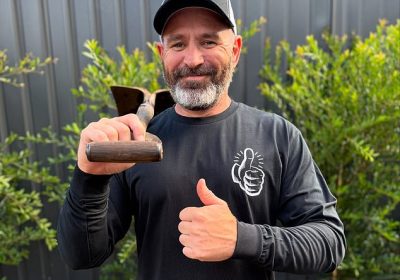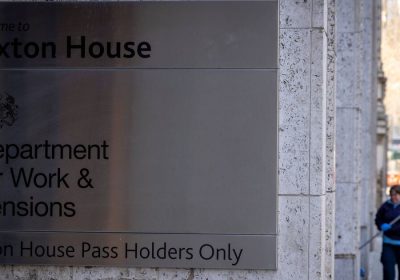Table Of Content
For investors willing to take on more credit risk, high-yield bonds can help increase a portfolio’s yield. Funds with proven track records can help investors gain exposure to a diversified set of high-yield bonds.
To screen for the top-performing funds in this category, we looked for those with the best returns over the last one-, three-, and five-year periods. All names that passed the screen were actively managed.
High-Yield Bond Fund Performance
- American Funds American High-Income Trust RITGX
- Artisan High Income Fund APHFX
- BlackRock High Yield Portfolio Fund BRHYX
- Fidelity Capital & Income Fund FAGIX
Over the last 12 months, high-yield bond funds have returned 8.12%. On an annualized rate, these funds have returned 7.75% over the last three years and 5.00% over the last five. Meanwhile, the Morningstar US Core Bond Index has returned 3.95% over the last 12 months, gained 1.60% per year over the last three years, and lost 1.10% per year over the last five years.
What Are High-Yield Bond Funds?
High-yield bond portfolios concentrate on lower-quality bonds, which are riskier than the bonds of higher-quality companies. These portfolios generally offer higher yields than other types, but they are also more vulnerable to economic and credit risk. These portfolios primarily invest in US high-income debt securities, wherein at least 65% or more of bond assets are not rated or are rated by a major agency, such as Standard & Poor’s or Moody’s, at the level of BB (considered speculative for taxable bonds) and below.
Screening for the Top-Performing High-Yield Bond Funds
We looked at returns from the past one, three, and five years using data available in Morningstar Direct. We screened for open-ended and exchange-traded funds in the top 33% of the category using their lowest-cost primary share classes for those periods. We also filtered for funds with Morningstar Medalist Ratings of Bronze, Silver, or Gold. We excluded funds with assets under $100 million and analyst coverage that was not 100%. This left four names.
Because the screen was created with the lowest-cost share class for each fund, some may be listed with share classes that are not accessible to individual investors outside of retirement plans, or they may be aimed at institutional investors and require large minimum investments. The individual investor versions of those funds may carry higher fees, reducing returns to shareholders. In addition, Medalist Ratings may differ among the share classes of a fund.
American Funds American High-Income Trust
- Morningstar Medalist Rating: Silver
- Morningstar Rating: ★★★★★
Over the past 12 months, the $25 billion American Funds American High-Income Trust rose 9.00%, while the average fund in its category rose 8.12%. The American Funds fund, launched in May 2009, has climbed 8.71% over the past three years and 7.05% over the past five.
“American Funds American High-Income Trust’s late 2020 recentering of the portfolio on the midquality portion of the high-yield bond universe has proven effective, earning the fund a Process upgrade to Above Average from Average. Years of underperformance set the stage for that recentering. For much of the decade prior to April 2018, when David Daigle took over as principal investment officer, the strategy’s wide-ranging focus on income included a healthy dose of emerging-markets sovereign bonds and a penchant for double-digit overweightings in CCC-rated credits.
“Working with Capital Group’s risk and quantitative solutions group, he established more stringent internal fund-level guidelines relative to the Bloomberg US High Yield 2% Issuer Capped Index to keep volatility in check. Those guidelines include limiting exposure to credits rated BB and above as well as CCC and below. The portfolio’s credit profile has moderated since while still allowing enough latitude within individual manager’s sleeves to pursue opportunities they find appealing. Daigle and Tara Torrens are most apt to assess bonds based on issuer fundamentals, though Daigle is more aggressive in buying lower-rated bonds.
“Thomas Chow regularly seizes on relative value differences, while Shannon Ward pays close attention to the ratings mix in her portfolio to gain an edge on the benchmark. The fund’s performance from 2021 to September 2024 has been outstanding, especially when adjusted for risk. With four veteran managers and a stable bench of analysts and traders, this fund is now a strong option.”
—Alec Lucas, director
Artisan High Income Fund
- Morningstar Medalist Rating: Gold
- Morningstar Rating: ★★★★★
Over the past 12 months, this $9.7 billion fund has gained 10.14%, while the average fund in its category is up 8.12%. The Artisan Partners fund, which launched in October 2016, has climbed 8.91% over the past three years and 7.13% over the past five.
“A high-functioning team and impressive investment process distinguish Artisan High Income from virtually all competitors. Manager Bryan Krug expertly runs Artisan’s credit franchise and this fund, which launched in December 2013 and March 2014, respectively. Over the past decade, the team has gone from startup to a high-functioning group with deep research skills. Franchise assets have grown to over $11 billion, and the fund has earned one of the best records in the high-yield bond Morningstar Category. Krug’s supporting resources include six senior analysts (seven including Seth Yeager, Krug’s co-manager on Artisan Floating Rate), a trader, a data scientist, and a chief operating officer.
“Each analyst also has the skills or background necessary to support the kind of concentrated portfolio that Krug likes to run. He remains central to the group’s success, though. That concentrated portfolio—with typically one third of assets in the largest 10 issuers—is one facet of Krug’s investment style. Another is a preference for asset-light companies that generate substantial cash flow and require less capital reinvestment but also often carry lower credit ratings. More traditional hard-asset companies still play a role here, but the team likes to buy them during periods of dislocation rather than hold them through a full cycle. Examples of the former include insurance broker Ardonagh, while an example of the latter is cruise line operator Carnival, which the team purchased during the 2020 coronavirus crisis; it has since become one of the best-performing positions in the fund’s history.
“The distinctive style means this is a capacity-constrained strategy by nature, and so its April 2021 closure to new investors was an important step in protecting the integrity of Krug’s investment approach. Only a select few of its 200-plus category peers have ever fully or partially closed. Performance has remained consistently impressive since the fund’s inception. Its institutional share class has beaten at least half of distinct category peers every calendar year from 2015 through 2024, and in five of those 10 years it beat more than 80%. Adjusted for volatility, returns looked equally impressive; over the trailing 10 years through March 2025, its information ratio was better than all but one peer, while its standard deviation (a measure of volatility) was average.”
—Brian Moriarty, principal
BlackRock High Yield Portfolio Fund
- Morningstar Medalist Rating: Gold
- Morningstar Rating: ★★★★
The $27.3 billion fund has climbed 9.13% over the past 12 months, outperforming the average fund in its category, which rose 8.12%. The BlackRock fund, launched in November 1998, has climbed 8.72% over the past three years and 5.81% over the past five.
“BlackRock’s US high-yield bond strategy is a strong offer, boasting a veteran management team and extensive supporting resources coupled with a well-rounded investment approach. Portfolio managers Mitchell Garfin and David Delbos, co-heads of BlackRock’s US leveraged finance team, have collaborated for nearly a decade as the day-to-day managers at this strategy, sold in the US as BlackRock High Yield Bond and in Europe and Asia as BGF US Dollar High Yield Bond. Together, the duo boasts half a century of experience in leveraged finance, making this management crew one of the most seasoned in the high-yield bond Morningstar Category, and they are responsible for both top-down macro calls and bottom-up security selection here.
“With roughly $55 billion under management across its global high-yield strategies, the leveraged finance team has a large footprint in the high-yield market, so staying nimble can be tricky. The team attempts to overcome some of those challenges by broadening its scope to include bank loans (in its US-domiciled fund) and collateralized loan obligations (in its European vehicle), as well as investment-grade corporates (historically ranging between 0% and 15% of portfolio assets). The team can also venture into equities (up to 10% of portfolio assets). In recent years, the strategy has also invested more in exchange-traded funds (which have reached roughly 10% of assets at times), credit default swaps, and total return swaps to quickly gain or trim diversified market exposure when such instruments are easier to trade or better priced than cash bonds. This flexible approach has resulted in an impressive long-term track record.”
—Jeana Marie Doubell, analyst
Fidelity Capital & Income Fund
- Morningstar Medalist Rating: Silver
- Morningstar Rating: ★★★★★
The $13.8 billion fund has climbed 12.08% over the past 12 months, outperforming the average fund in its category, which rose 8.12%. The Fidelity fund, launched in November 1977, has climbed 9.88% over the past three years and 8.63% over the past five.
“The research engines powering Fidelity Capital and Income’s unconventional high-yield portfolio are key to its success. This team checks all the boxes. Veteran manager Mark Notkin has been a stabilizing force, leading the strategy for over two decades. Notkin has made his mark by translating bottom-up insights from supporting high-yield and equity research teams into a high-octane portfolio that has often featured upward of 20% in common stock over the past decade.
“With prolonged success, however, comes key-person risk. Fidelity sought to combat this by naming Brian Chang as comanager to the strategy in 2019. Chang rose to portfolio management from Fidelity’s high-yield research ranks, and his partnership with Notkin helps to ease concerns around the strategy’s long-term succession planning. While Notkin and Chang’s assessments of relative value across asset classes are critical, they also benefit from topnotch fundamental research from the firm’s Boston-based high-yield and equity research teams. The strategy stands out among even the most aggressive in the high-yield bond Morningstar Category for its hefty equity stake. Notkin makes full use of his 22% cap on equities during periods when he believes the yield premium of high-yield bonds over stocks (the latter of which is estimated using earnings yields of broad-based market indexes like the S&P 500) to be insufficient. Meanwhile, only a select few high-yield managers allocate even 1% to equities.
“Risk mitigation is paramount here, given the strategy’s ability to allocate to common stock. When dialing up equity exposure, Notkin and Chang will often take down the bond sleeve’s credit risk and raise cash. Though prudent, that doesn’t prevent fundholders from being subjected to extreme volatility when the equity markets see-saw as they have in 2025. Patient investors willing to stomach larger short-term drawdowns have been well served with this opportunistic high-yield offering. It hasn’t fared quite as well amid some recent policy-driven market volatility, but the strategy’s long-term record stacks up well against any other high-yield strategy. Indeed, its trailing five- and 10-year returns each ranked in the top decile versus distinct high-yield bond category peers, while its volatility-adjusted returns (as measured by the Sharpe ratio) were nearly equally as impressive.”
—Max Curtin, analyst
This article was generated with the help of automation and reviewed by Morningstar editors.
Learn more about Morningstar’s use of automation.









No Comment! Be the first one.